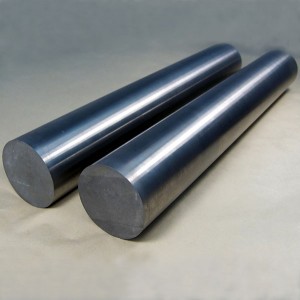High purity 99.95% capillary tantalum tube
The material of tantalum capillary tube is high-purity tantalum, with a purity usually reaching 99.95% or higher. Its chemical composition mainly includes elements such as tantalum, niobium, iron, silicon, nickel, tungsten, etc., and the specific composition varies depending on different grades.
| Dimensions | As your requirement |
| Place of Origin | Henan, Luoyang |
| Brand Name | FGD |
| Application | Industry |
| Color | Silver |
| Surface | Polished |
| Purity | 99.9% Min |
| Packing | Wooden Case |
| Density | 16.65g/cm3 |

|
Grade |
Diameter(mm) |
Thickness(mm) |
Length(mm) |
|
Ta1 |
1.0-150 |
0.2-5.0 |
200-6000 |
|
Ta2 |
1.0-150 |
0.2-5.0 |
200-6000 |
|
RO5200 |
≥1 |
0.2-5.0 |
≤2000 |
|
RO5400 |
≥1 |
0.2-5.0 |
≤2000 |
1. Our factory is located in Luoyang City, Henan Province. Luoyang is a production area for tungsten and molybdenum mines, so we have absolute advantages in quality and price;
2. Our company has technical personnel with over 15 years of experience, and we provide targeted solutions and suggestions for each customer's needs.
3. All of our products undergo strict quality inspection before being exported.
4. If you receive defective goods, you can contact us for a refund.

1. Raw material preparation
2. Sintering
3. Squeeze
4. Drawing
5. Annealing
6. Organization
7. Quality Control
8. Packaging and Shipping
Tantalum capillary tubes are mainly used in the semiconductor industry, high-temperature materials, anti-corrosion industry, and electronics industry. In the semiconductor industry, tantalum capillaries are used to manufacture key components in semiconductor equipment, such as reaction vessels, heat exchange tubes, condensers, etc. In the high-temperature materials and anti-corrosion industries, tantalum capillary tubes are commonly used in the manufacturing of chemical anti-corrosion equipment, such as reaction vessels and distillation towers, due to their excellent high-temperature resistance and corrosion resistance. In addition, tantalum capillary tubes are widely used in the electronics industry for manufacturing protective tubes and heaters for electronic devices.







Capillaries are classified into various types based on their design, application and materials. The following are two common types of capillary tubes:
1. Glass capillary
- Material: These tubes are made of glass and are commonly used in laboratory settings.
- Applications: Commonly used in chromatography, micro-sampling, and as components of various scientific instruments. They are valued for their precision and ability to handle small amounts of liquid.
2. Metal Capillary
- Material: Made of metals such as stainless steel, tantalum or other alloys.
- Applications: Used in a variety of industrial applications including fluid transfer, gas sampling and medical equipment. Metal capillary tubing is preferred for its strength, durability, and resistance to high temperatures and corrosive environments.
These two types of capillary tubes serve different purposes and are selected based on the specific requirements of the application.
1. Unique Properties
- Corrosion Resistance: Tantalum is highly resistant to corrosion, even in harsh environments, making it ideal for chemical processing and medical device applications.
- High Melting Point: Tantalum has a melting point of approximately 3,017 °C (5,463 °F) and can withstand extreme temperatures, which is critical for aerospace and high-performance applications.
- Ductility and Malleability: Tantalum is malleable and can be easily formed into thin wires, sheets, or complex shapes without breaking.
2. Electronics Industry Demand
- Tantalum is widely used in the electronics industry, particularly in the production of capacitors for cell phones, computers and other electronic devices. As consumer electronics grows, demand for high-performance capacitors has increased significantly, driving up the value of tantalum.
3. Biocompatibility
- Tantalum is biocompatible, making it suitable for use in medical implants and devices. Its ability to combine well with human tissue without causing adverse reactions increases its value in the medical field.
4. Limited supply
- Tantalum is a rare element whose extraction is often associated with complex mining processes. The limited resources of high-quality tantalum result in its high market value.
5. Strategic Metal
- Tantalum is classified as a strategic metal due to its importance in various high-tech applications. This classification could increase investment and interest in tantalum supplies, further increasing its value.
6. Ethical Procurement Issues
- The sourcing of tantalum, particularly from conflict-affected areas, raises ethical issues. Efforts to ensure responsible sourcing may affect the market dynamics and value of tantalum.
In summary, tantalum’s unique properties, high demand from electronic and medical applications, limited supply, and strategic importance contribute to its high market value.












